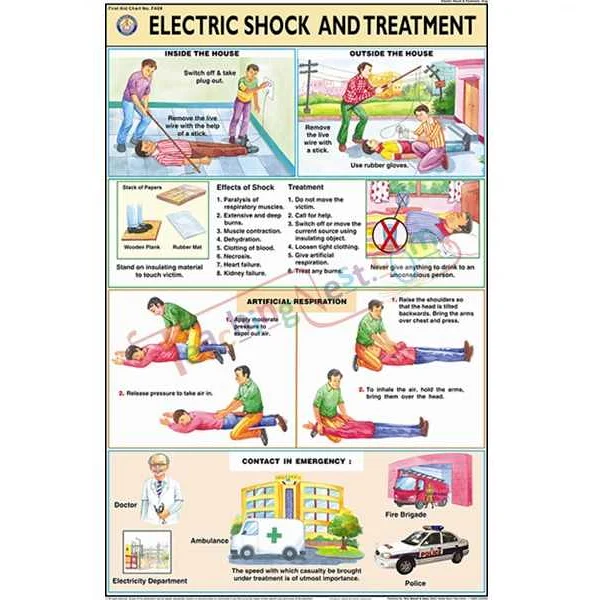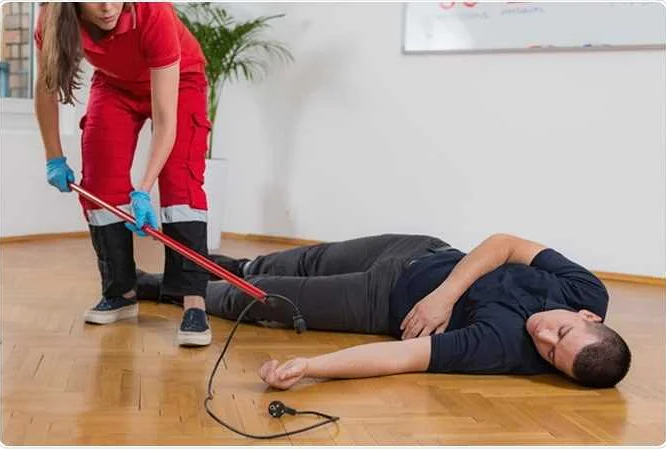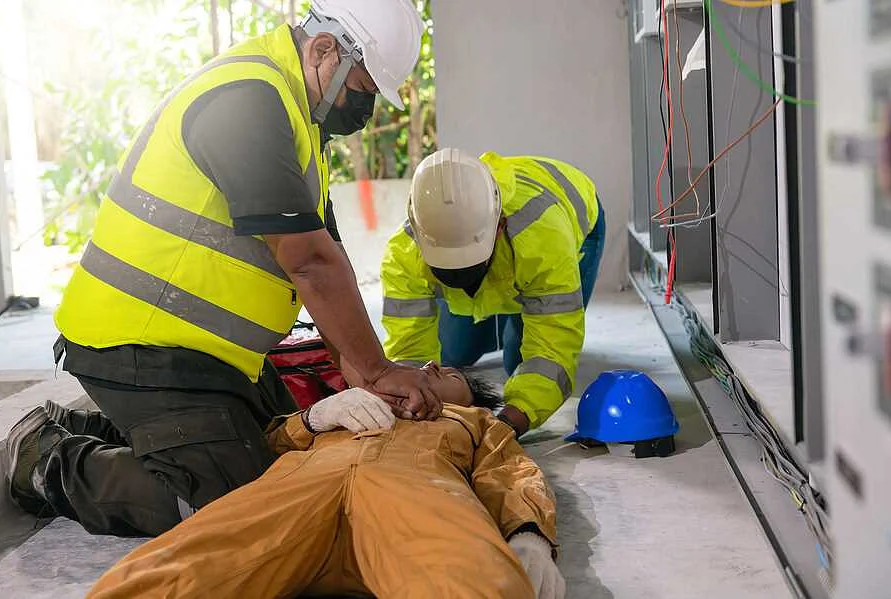How to provide first aid for electrical injury
Содержимое
Learn about the first aid procedures for electrical injuries, including how to assess the situation, provide CPR, and treat burns. Get essential tips for responding to electrical accidents and ensuring the safety of the victim until medical professionals arrive.
Electricity plays a crucial role in our everyday lives, powering our homes, workplaces, and numerous devices. However, with its immense power, electricity also presents certain dangers. Electrical accidents can occur unexpectedly and result in severe injuries. It is essential to be prepared and knowledgeable in providing first aid for electrical injuries to minimize the potential harm.
When encountering an electrical accident, it is crucial to remember the golden rule of never touching the injured person directly. Direct contact with the victim may lead to further injuries or electrocution. Instead, it is necessary to ensure the power source is disconnected before attempting to assist the injured individual.
First and foremost, your safety and the safety of others should be the top priority. If possible, carefully move the injured person away from the electrical source using a non-conductive object or material such as a wooden stick or a dry cloth. Keeping a safe distance from the electrical hazard is essential to prevent additional injuries.
Once the victim is at a safe distance from the electricity source, it is crucial to check their responsiveness and breathing. If the person is unresponsive or not breathing, it is necessary to start cardiopulmonary resuscitation (CPR) immediately while waiting for medical professionals to arrive. If the person is conscious, encourage them to remain calm and still to minimize the risk of further complications.
What to Do Immediately After an Electrical Accident

Electrical accidents can be serious and potentially life-threatening. If you witness or are involved in an electrical accident, it is important to take immediate action to ensure your safety and the safety of others. Here are the steps you should follow:
| Step 1: | Assess the situation |
| Step 2: | Call for help |
| Step 3: | Ensure the power is off |
| Step 4: | Check for injuries |
| Step 5: | Provide first aid |
| Step 6: | Do not move the injured person |
| Step 7: | Wait for medical help |
When assessing the situation, be sure to prioritize your safety. If the area is still dangerous or there is a risk of electrocution, do not approach the injured person or touch any electrical equipment. Instead, call emergency services immediately.
Once help is on the way, ensure that the power is off to prevent any further accidents. If possible, switch off the main power supply or unplug the electrical device causing the accident. Use insulated tools or non-conductive materials to do so, as touching live wires can be fatal.
Next, check the injured person for any signs of shock or burns. If they are unconscious, not breathing, or do not have a pulse, you may need to perform CPR or use an automated external defibrillator (AED) if trained to do so. If the person is conscious but has burns, cover the affected area with a cool, clean cloth to help alleviate pain and prevent infection.
It is important not to move the injured person unless absolutely necessary, as this could worsen their condition. Instead, wait for medical help to arrive and follow their instructions. Provide comfort and reassurance to the injured person while waiting for professional assistance.
Remember, electrical accidents can be extremely dangerous, and it is crucial to prioritize safety and seek medical help as soon as possible. By following these steps, you can help minimize the impact of an electrical accident and potentially save lives.
Call for Help
If you witness an electrical accident or are involved in one yourself, it is crucial to seek immediate medical assistance. Electrical injuries can be severe and potentially life-threatening, so it is essential to call for professional help as soon as possible.
After ensuring your own safety, dial the emergency services number in your country, such as 911 in the United States or 999 in the United Kingdom. Inform the operator about the electrical accident and provide them with the address or location where the incident occurred.
While waiting for help to arrive, it is important to keep the injured person calm and reassure them that aid is on the way. If the person is unconscious or not breathing, begin performing CPR if you are trained to do so.
Do not attempt to move a person who may have sustained a spinal injury, as doing so could worsen their condition. Instead, wait for medical professionals to arrive and follow their instructions.
Remember, timely medical intervention is critical in electrical injury cases, so do not hesitate to call for professional help immediately.
Ensure Your Safety
When dealing with electrical accidents, the most important thing is to prioritize your own safety. Remember, electricity is a powerful and potentially dangerous force. To ensure your safety, follow these guidelines:
1. Stay calm and assess the situation. Before approaching the injured person or the source of the electrical current, take a moment to evaluate the potential risks.
2. Do not touch the injured person if they are still in contact with the electrical source. This could result in a secondary shock.
3. If it is safe to do so, turn off the electrical power source or unplug the device causing the accident. This will help prevent further injuries.
4. If you are unable to turn off the power source, use a non-conductive object, such as a broom or wooden pole, to separate the person from the electrical current.
5. Call for emergency medical help immediately. Even if the person appears to be fine, they may have internal injuries that require medical attention.
6. Do not attempt to provide first aid or CPR to the injured person until they are safely away from the electrical source.
Remember, your safety is the top priority. Always take precautions and seek professional help when dealing with electrical accidents.
Recognizing Electrical Injuries

Electrical injuries can occur in a variety of ways, and it is important to be able to recognize the signs and symptoms so that prompt medical attention can be sought. Here are some common indications of electrical injuries:
- Burns: Electrical burns may appear as red, swollen, or charred skin. They can be caused by direct contact with an electrical source or by current passing through the body.
- Cardiac Arrest: Electrical shocks can disrupt the normal rhythm of the heart, leading to cardiac arrest. If the person is unresponsive and not breathing, perform CPR immediately.
- Respiratory Distress: Electric shock can also cause difficulty breathing or even stop breathing altogether. It is important to monitor the person’s breathing and seek medical help if necessary.
- Neurological Symptoms: Electrical injuries can affect the nervous system, leading to symptoms such as muscle weakness, numbness, tingling, or loss of consciousness.
- Falls or Trauma: If a person has been electrocuted, they may fall or be thrown from the source of the electrical current, which can result in injuries such as fractures, sprains, or head trauma.
It is important to remember that not all electrical injuries are immediately apparent. Some symptoms may be delayed, so it is crucial to seek medical attention even if the person appears to be fine initially. Early intervention can prevent further complications and improve the chances of a full recovery.
Signs of Electrical Burns

Electrical burns can occur when electrical current passes through the body and causes damage to the skin and other tissues. The severity of an electrical burn can vary depending on factors such as the voltage and duration of the exposure. It is important to be able to recognize the signs of electrical burns in order to provide appropriate first aid:
- Redness or discoloration of the skin
- Blistering or swelling
- Charred or blackened skin
- Open wounds or sores
- Pain or numbness at the site of the burn
In some cases, electrical burns may cause damage to deeper tissues, organs, or bones. Signs of more severe electrical burns can include:
- Difficulty breathing or shortness of breath
- Chest pain or tightness
- Confusion or disorientation
- Seizures
- Weakness or paralysis
If you or someone else has experienced an electrical burn and is exhibiting any of the signs mentioned above, it is important to seek immediate medical attention. Electrical burns can cause serious complications and should be treated by a medical professional as soon as possible. Do not attempt to treat severe electrical burns at home.
Identifying Electrical Shock
Electrical shock can occur when a person comes into contact with an electrical current. It is important to be able to identify the signs and symptoms of electrical shock in order to provide prompt and appropriate first aid.
Some common signs and symptoms of electrical shock include:
| Signs | Symptoms |
| Tingling or numbness | Muscle pain and contractions |
| Burns or other visible injuries | Difficulty breathing or shortness of breath |
| Loss of consciousness | Irregular heartbeat or heart palpitations |
| Seizures or convulsions | Confusion or disorientation |
If you suspect that someone has been electrocuted, it is important to take immediate action. Call for medical help and, if safe to do so, turn off the power source or remove the person from the source of electricity using a non-conductive object such as a wooden pole or rubber gloves. Do not touch the person with your bare hands, as you may also be at risk of electrocution.
Remember, electrical shock can be life-threatening, so it is important to seek medical attention as soon as possible. Do not attempt to treat or diagnose electrical shock on your own unless you have been trained in first aid and are confident in your abilities.